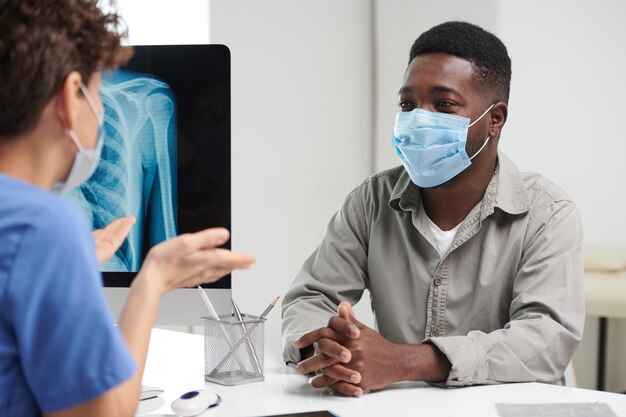Understanding Tuberculosis: Pathways to Overcoming a Global Health Challenge
When it comes to infectious diseases, tuberculosis (TB) stands out as one of the oldest and most pervasive, affecting millions of people worldwide. Despite the modern advances in healthcare, TB continues to pose significant challenges to public health systems across the globe. This comprehensive article aims to provide a clear and engaging exploration of TB, addressing crucial aspects and offering insights into overcoming this condition without delving into direct medical advice.
What is Tuberculosis?
At its core, tuberculosis is an infectious disease caused by the bacterium Mycobacterium tuberculosis. It primarily impacts the lungs but can also affect other parts of the body, such as the kidneys, spine, and brain. TB spreads through airborne particles when an infected person coughs, sneezes, or even talks, inhaled by others nearby.
Key Symptoms of Tuberculosis
Identifying TB is crucial for timely treatment. Some common symptoms include:
- Persistent Cough: Lasting more than three weeks.
- Chest Pain: Discomfort or pain when breathing or coughing.
- Coughing Up Blood: Resulting from lung damage.
- Fatigue: Persistent tiredness and lack of energy.
- Fever and Night Sweats: Often frequent and severe.
- Weight Loss: Unexplained and significant.
Recognizing these symptoms and seeking medical evaluation can lead to early detection, increasing the effectiveness of treatment.
The Journey of Treating Tuberculosis
Combatting TB relies on a multifaceted approach focused on diagnosis, medication, and public health strategies. Treatment efforts not only aim to cure the affected individual but also prevent the spread within communities.
Diagnostic Pathways
Diagnosing TB involves several tests and procedures:
- Tuberculin Skin Test (TST): Also known as the Mantoux test, a small amount of tuberculin is injected under the skin, monitored for reactions indicating immune response.
- Interferon-Gamma Release Assays (IGRA): Blood tests measuring the immune system's response to TB-specific antigens.
- Chest X-rays: Used to detect lung damage characteristic of TB.
- Sputum Tests: Examining phlegm for the presence of TB bacteria.
Prompt and accurate diagnosis ensures the implementation of effective treatment regimes.
Medication Regimens
The cornerstone of TB treatment is a four-drug regimen, often referred to as DOTS (Directly Observed Treatment, Short-course). The regimen typically includes:
- Isoniazid
- Rifampicin
- Ethambutol
- Pyrazinamide
These medications are taken for a minimum of six months, adhering strictly to the prescribed schedule to avoid antibiotic resistance, a growing concern in TB management.
Addressing Drug-Resistant Tuberculosis
In some cases, TB bacteria develop resistance to standard medications, leading to Multidrug-Resistant TB (MDR-TB). Treatment for MDR-TB is more prolonged, costly, and involves second-line drugs such as:
- Bedaquiline
- Linezolid
- Clofazimine
Addressing drug resistance demands enhanced diagnostic tools, patient adherence to treatment, and public health interventions aimed at preventing transmission and supporting affected individuals.
Promoting Patient Adherence
Ensuring patients complete their treatment is vital for their recovery and community health. Strategies to improve adherence include:
- Education and Counseling: Empowering patients with knowledge about the disease and treatment.
- Support Systems: Family and community involvement to encourage medication adherence.
- Incentive Programs: Providing food, transportation, or financial support to offset treatment costs.
Preventative Measures and Public Health Impact
Preventing TB requires a blend of vaccination, public awareness, and community involvement. The BCG vaccine is commonly administered to protect infants and young children, although its effectiveness in adults is variable.
The Role of Public Health Initiatives
Public health initiatives focus on:
- Screening and Surveillance: Identifying at-risk populations for proactive testing.
- Education Campaigns: Promoting respiratory hygiene and awareness of TB symptoms.
- Access to Healthcare: Improving healthcare reach in remote or underserved areas.
The Global Health Landscape
Addressing TB is not just about individual treatment; it involves a broader perspective geared toward global health improvements. International organizations and governments consistently work on:
- Reducing Stigma: Changing societal attitudes towards TB to encourage people to seek help.
- Resource Allocation: Directing funds towards research, healthcare access, and support services.
- Policy Development: Advocating for policies that bolster healthcare systems and prioritize infectious disease control.
A Look Toward the Future
Innovations in TB management hold promise for more effective treatments and potentially preventing the disease altogether. Researchers are continually exploring new medications, vaccines, and diagnostic tools.
Technological Innovations
Technology plays an integral role in combating TB through:
- Telemedicine and Mobile Health Apps: Facilitating remote monitoring and support for patients, especially in rural areas.
- Artificial Intelligence: Enhancing diagnostic accuracy and predicting treatment outcomes.
By embracing these innovations, there’s potential for significant strides in controlling and eventually eradicating TB.
In the continued battle against tuberculosis, collaborative efforts between healthcare providers, patients, communities, and policymakers offer the most viable pathway to progress. The progress made in recent years serves as a testament to the global resolve to end TB, highlighting the importance of staying informed, supportive, and proactive in these endeavors.
Quick Takeaways: 🚀
- Identify Symptoms: Persistent cough, weight loss, and fatigue are key indicators. 🔍
- Diagnosis Matters: Seek timely medical evaluation through tests like skin and blood assays. 🩺
- Follow Treatment: Complete prescribed regimen to prevent resistance. 💊
- Support Systems: Engage in community and family support for patient adherence. 🤝
- Education & Awareness: Promote public health measures and awareness campaigns. 📚
- Future Focus: Leverage technology and global collaboration for innovative solutions. 🌐
